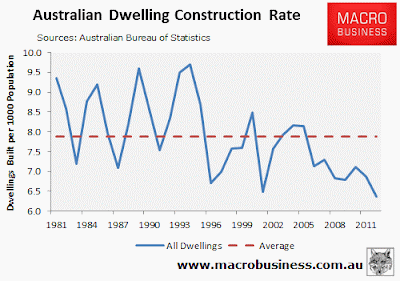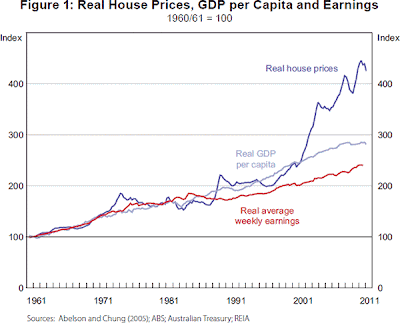Apologies for distorting Shakespeare’s Macbeth, but recent talk of a housing ‘bubble’ in Australia is increasingly reminiscent of soothsayers with bubbling cauldrons of economic brew. While dire warnings of impending doom are taking things too far, there are good reasons to be concerned about housing dysfunction in Australia.
The definition of a market bubble is where prices trade at high volumes and at prices which are detached from intrinsic value. We usually only spot a bubble after the event – when prices drop sharply. Australia’s housing markets may be dysfunctional and structurally distorted by taxes and regulation, but to suggest they are in a ‘bubble’ is a simplistic observation based mainly on some recent positive movements in the established house markets of Sydney and Melbourne.
One of my main complaints with many economists and much of the media is that they treat Australia’s housing market as a single product, equally subject to the laws of supply and demand. Apart from obvious geographic differences, there are very large differences between the established housing markets (trading of second hand homes in established areas) and new housing development. Few commentators, policy makers or reporters seem to understand the significant impact on input prices for new housing of things like complex planning regulations, the long lead times on new supply, the distortions to supply imposed by urban growth boundaries, the differential tax treatments on new supply through the GST and the per-dwelling infrastructure levies - none of which apply to established housing.
Advertisement
This weight of this regulatory and tax burden has largely been created by various state and local governments from the late 1990s onwards. It’s had a dramatic impact on new housing construction, pushing our rate of new dwelling supply per thousand of population to a thirty year low. Anyone looking at this depressing graph would be hard pressed to be talking about a ‘bubble’ in the Australian housing market:

While new taxes and regulation have succeeded in pushing the new housing market to a 30 year low in terms of new supply, the same can’t be said for the established housing market which has largely been left untouched by regulatory or tax creep for decades. It would be political suicide for a government of any persuasion to tamper with taxes or regulation of existing housing. (Somehow though, the same political caution hasn’t been felt in terms of new housing).
So the performance of the established housing market has been in stark contrast to the new housing market. And it is graphs like this which have ‘bubble’ proponents staring deep into their cauldrons:

Advertisement
The latter shows that established house prices in major centres have risen dramatically, relative to measures of economic growth and to average incomes. Does this constitute a bubble?
Certainly, for people on average incomes, entering the housing market via the established house market, especially in inner city or mid ring areas where supply of vacant land has been all but exhausted, can now be prohibitive. Supply is constrained because established areas are built out. More people wanting to live in these areas means rising demand relative to supply, and when economic conditions permit (as they do now) prices rise.
With median house prices (based as they are on the sale of established houses) hovering around the $500,000 mark in many cities, you would ideally need a combined household income of $100,000 for this to be anything like affordable. $150,000 would be better. Having said that, there are enough families with two incomes bringing in over $100,000 per annum so that housing at this level is still accessible for some. But if your combined household income is less than $70,000 per annum, you’d be pretty much locked out of many housing opportunities in established areas. And there are also plenty of families and individuals who fit that description today.
Discuss in our Forums
See what other readers are saying about this article!
Click here to read & post comments.
3 posts so far.